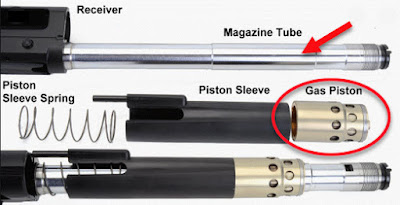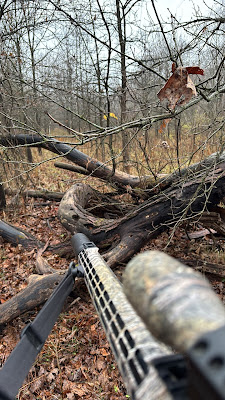Shooting in Elk Rifle
As we get ready for elk hunting next month, it's time to sight in our rifles.
Two weeks back, Dad and I shot in his 30-06. We start at 25 yards and get our shots on a piece of 8.5" x 11" paper. Then we move to 50 yards and get tighter. Finally, we move to 100 yards and get it where we want. For some reason, the shots were sporadic at 25 yards. In fact, they were so bad, I knew that I could NOT be to blame.
We started checking equipment. Turns out Dad had put on his new scope - but he had not tightened the rings! Once properly installed, it became much easier to sight in. Dad's gun is about 1" high at 100 yards.
This last week-end, then, it was my turn to sight in the .308. Same procedure as above, but no loose rings.
I used the "cheaper" 150 grain bullets to get close at 100 yards and then switched to my 180 grain "hunting loads" to finish the job. Why? Because at $2 per shot, you want to conserve the 'good' ammo for actually putting meat on the table and not punching holes in paper.
From the picture of the target below, you can see that I was high and left - about 4" high and 3" left as determined by the black boxes - each being 1 inch square. I kept turning my scope "down" and "right" until my last two shots - those in the red circle - are touching.
This is the point where you should be impressed. Two shots from 100 yards, nearly in the same hole. I am sitting on our shooting bench, resting the rifle forearm on a rubber block. This entire set-up is on top of a trailer that's hooked to the Gator. Bench on trailer allows for easy moving out to 100 yards. I invite you out to duplicate this effort. Bring your own gun if you'd like. Heck I'll even let you use this one if you want to - but you supply the ammo. This really is good shooting! Credit to both the rifle and the shooter.
Two weeks back, Dad and I shot in his 30-06. We start at 25 yards and get our shots on a piece of 8.5" x 11" paper. Then we move to 50 yards and get tighter. Finally, we move to 100 yards and get it where we want. For some reason, the shots were sporadic at 25 yards. In fact, they were so bad, I knew that I could NOT be to blame.
We started checking equipment. Turns out Dad had put on his new scope - but he had not tightened the rings! Once properly installed, it became much easier to sight in. Dad's gun is about 1" high at 100 yards.
This last week-end, then, it was my turn to sight in the .308. Same procedure as above, but no loose rings.
I used the "cheaper" 150 grain bullets to get close at 100 yards and then switched to my 180 grain "hunting loads" to finish the job. Why? Because at $2 per shot, you want to conserve the 'good' ammo for actually putting meat on the table and not punching holes in paper.
From the picture of the target below, you can see that I was high and left - about 4" high and 3" left as determined by the black boxes - each being 1 inch square. I kept turning my scope "down" and "right" until my last two shots - those in the red circle - are touching.
This is the point where you should be impressed. Two shots from 100 yards, nearly in the same hole. I am sitting on our shooting bench, resting the rifle forearm on a rubber block. This entire set-up is on top of a trailer that's hooked to the Gator. Bench on trailer allows for easy moving out to 100 yards. I invite you out to duplicate this effort. Bring your own gun if you'd like. Heck I'll even let you use this one if you want to - but you supply the ammo. This really is good shooting! Credit to both the rifle and the shooter.
At this point you should be asking yourself why Dad sighted his rifle in at 1" high and I did not. Excellent question. The answer has to do with the scopes. My scope has a bullet drop compensator built in.
So, Dad can hold dead on at 100 yards. At 200 yards, his shot will be 1.6" low. And at 300 yards, 11" low. All shots within the kill zone on an elk without adjusting anything.
For me, I compensate for bullet drop (the effect of gravity on the bullet) by aiming higher with my scope. At 100 yards I hold dead on. At 200 yards, I use the first line BELOW dead center. At 300 yards, the second line. Repeat. See example picture below of what it looks like through my scope.
The tiny ticks or hash marks on the left or right allow you to compensate for the effects of wind on your bullet. So it all comes down to equipment and a matter of choice. But hey Jack, at least now you know.
Of course all of this does not mean that when we arrive in Colorado we don't have to do it again. Temperature and humidity affect the bullet performance. Since we'll be at a higher elevation and since the airlines "handled" (or mishandled) our weapons, we will sight them in again. They should be pretty close, but we'll verify that. No reason to miss a shot or make a poor one due to equipment issues.





Comments
Post a Comment